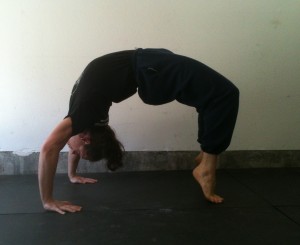It’s the most important thing…
Or it’s not that important at all…
Is there really one right answer?
Let’s look at this belief. “You only need enough flexibility to get around your daily life plus a little extra to spare.”
Well, the same could be said of strength or conditioning or even money for that matter.
And for the most of us, we don’t NEED all that much at all.
Unless you’re a gymnast, martial artist, or dancer you likely don’t need much at all.
Does that mean we should get to a certain level that then stop?
Obviously, I don’t think so. I’ll always want more of all of the above.
Now flexibility can be taken too far. If you go “contortionist crazy flexibility” you have to realize that you’re going to actually stretch your ligaments which would result in less strength and greater possibilities of injury.
Of course, most people aren’t even close to that so no worries there.
What do you do to build flexibility? The obvious answer is stretch, but what kind?
It can get confusing when you look at all the different forms. You’ve got static stretching, dynamic stretching, PNF, partner stretching, isometric stretching, weighted stretching and more.
And many trainers will claim you shouldn’t do certain types because they’re not good for you.
And as with everything else, lots of time must be involved, and often times lots of effort and pain. (Not injury pain, but lots of discomfort involved. If you‘ve ever done isometric stretching you know this to be true.)
But that’s not the way I do it. To be up front I enjoy dynamic stretching the most. No pain involved. And very little time. Still that’s not all I do.
I’ve come up with a series of exercises (about 10) that cover the body from the hands to the toes. I like to call them the Biggest-Bang-For-Your-Buck flexibility exercises.
Like the gymnast bridge which works the hips, complete spine, shoulders and wrists all at once.

Just one of several of the best exercises you can do for your overall flexibility and it doesn’t take long to do.
And they can all be done in about 5 minutes.
Will you actually build flexibility by doing so little work? Absolutely, when you do these exercises regularly you can’t not get better at them.
It’s a low effort and low time commitment method of flexibility training.
They’re covered in complete detail in How to Feel Like a Billion Dollars. Its just one module of six to help you get healthier, feel better, have more energy, and improve your performance.
Flexibility is important but no so important that it warrants hours of your time. Why not get it all in about five minutes a day?
